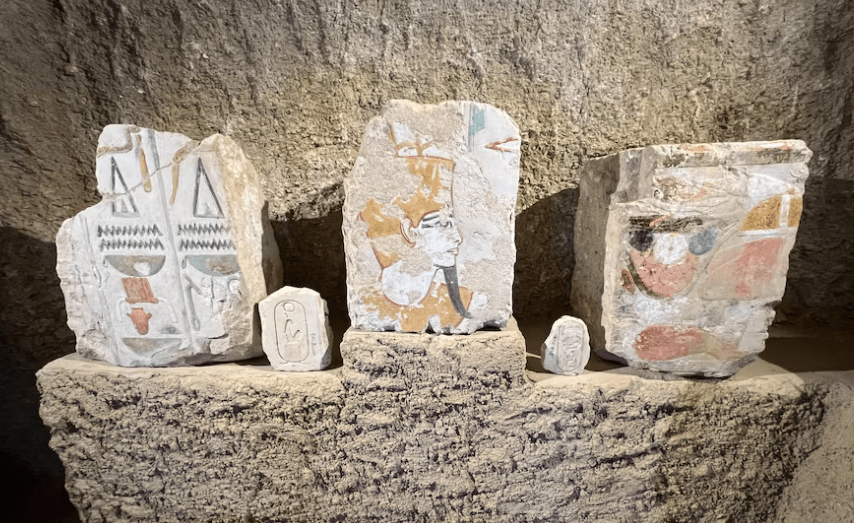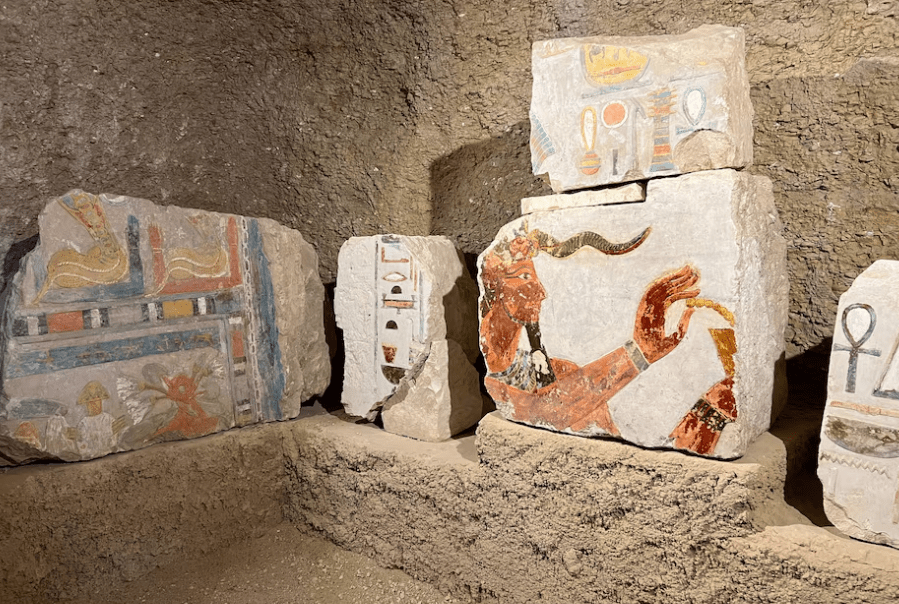By Malak Khaled
Archaeologists in Luxor have uncovered remarkable discoveries near Queen Hatshepsut’s Valley Temple.
These findings, by a joint Egyptian archaeological mission led by the Zahi Hawass Foundation for Antiquities and Heritage and by the Supreme Council of Antiquities, are considered the most important in Luxor’s west bank history since Tutankhamun’s tomb.
Hatshepsut’s Valley Temple Foundations
Archaeologists revealed intact portions of the foundation wall of Queen Hatshepsut’s Valley Temple. This grand entrance to her funerary temple was once thought to have been destroyed.
Over 1,000 intricately decorated blocks were unearthed, showcasing vivid bas-reliefs and inscriptions from the reigns of Hatshepsut and her successor, Thutmose III.
Limestone Tablet Naming Architect Senmut
A limestone plaque bearing the name and title of Queen Hatshepsut’s architect, Senmut, was discovered. Known as the supervisor of the palace, Senmut oversaw the temple’s construction. This unique artifact provides invaluable insights into his role and the temple’s design.
Queen Tetisheri’s Tomb
Nearby, the team uncovered the tomb of Queen Tetisheri, grandmother of King Ahmose I. The tomb’s simplicity, carved in rock and adorned with red wall drawings, reflects Egypt’s economic struggles during its liberation from the Hyksos.
Arrowheads and coffins dating back to the 17th Dynasty, including one belonging to Tetisheri’s supervisor, were also found.
Rock-Cut Tombs and Older Necropolises
Beneath Hatshepsut’s temple, Middle Kingdom rock-cut tombs and older necropolises were unearthed. Although some were looted, recovered artifacts such as pottery and tables with models of offerings of bread, wine, and the head and thigh of a bull provide insights into burial practices before the 18th Dynasty.
Wooden Coffins and Guard Artifacts
Wooden coffins, including one containing a child’s remains bound with ropes, were uncovered. Nearby, a well-preserved mat and woven wooden bed dating to the transition between the 17th and 18th Dynasties highlight the lives of necropolis guards during Egypt’s liberation from the Hyksos.
Royal Tablets
More than 100 limestone and quartzite tablets with Queen Hatshepsut’s cartouches were found, confirming her ownership of the temple.


The discoveries near Queen Hatshepsut’s Valley Temple and the surrounding area mark a monumental advancement in understanding ancient Egypt’s history, burial practices, and artistic achievements.
From decorated blocks to intact coffins, these findings not only honor Queen Hatshepsut’s legacy but also enrich our knowledge of the Hyksos period and the transition to the golden 18th Dynasty.
WE SAID THIS: Don’t Miss… Luxor Becomes The Site Of The World’s Most Important Archaeological Discovery



